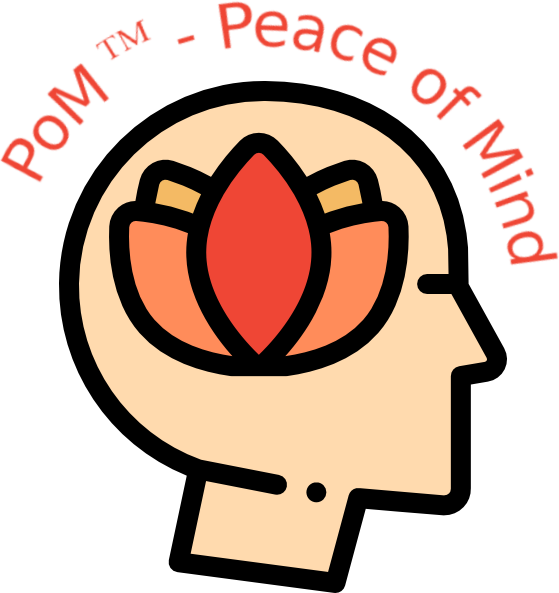DiPaMe-04/23/2024. - In honor of the 29th International Noise Awareness Day on April 24th, today PoM - Peace of Mind ... Happy Life ! delves into the multifaceted issue of noise pollution. - This blog post (part 1 and 2) explores the impact of noise on our human health, citing studies on noise measurements and decibel levels, alongside the historical evolution of noise and the challenges posed by modern technology.
The Detrimental Effects of Noise:
Close to the end of the 1st quarter of the 21st century, against all new technologies and inventions we still have to highlight the dangers of noise pollution, drawing on medical evidence.
According to the Environmental Protection Agency (EPA) [1], prolonged exposure to noise above 85 decibels (dB) can cause permanent hearing damage. Even lower levels of noise can disrupt sleep, increase stress hormones like cortisol, and contribute to cardiovascular problems [2].
Studies have shown that chronic exposure to traffic noise exceeding 65 dB can raise blood pressure and increase the risk of heart disease [3].
A Historical Perspective:
The rise of noise pollution is traced back to the Industrial Revolution, with noise measurements exceeding safe levels in factories due to machinery [4]. The growth of cities and the proliferation of cars, trucks, airplanes, and trains further exacerbated the problem. Today, even in rural areas, noise from farming and lawn equipment exceeding 90 dB and other machinery contributes to a rising din [5].
Technological Advancements and Shortcomings:
Yet, we can acknowledge advancements made in noise reduction. Inventions like hearing protection for workplaces, engine encapsulation, damping materials, and noise-isolating windows have helped mitigate noise pollution.
However, the constant presence of mobile devices with headphones and earbuds is creating new concerns.
Studies have found that listening to music at high volumes through earbuds can damage hearing, especially for young people [6].
The Modern Soundscape:
The pervasiveness of noise in our modern lives is reality. According to the World Health Organization (WHO), millions of people worldwide are exposed to unhealthy noise levels [7].
We are constantly bombarded by sounds, from traffic noise exceeding 80 dB to construction reaching 100 dB, and even the ever-present mobile devices we carry which can emit sounds exceeding 110 dB [8]. This constant auditory stimulation can lead to a sense of never being able to escape noise.
Hearing Loss and Aging:
Hearing naturally decreases with age, with a gradual decline in the ability to hear high-frequency sounds [9]. However, noise pollution can accelerate this process.
Advancements in Hearing Aids:
The advancements made in hearing aids for aging populations are being promoted by digital and programmable ads, offering improved sound quality, noise reduction features, and directional microphones to help people focus on conversations in noisy environments [10].
Conclusion:
We are calling out for increased awareness of noise pollution and its detrimental effects. The need for continued technological advancements in noise reduction is urgent. Individual practices and education are relevant that promote quieter spaces, and adhering to recommended safe noise exposure limits.
The International Noise Awareness Day serves as a crucial reminder to address this growing threat and strive for a more soundscape-friendly world, in both urban and rural environments.
Check your own environment with following table [11] ... free download as printable PDF here.
----------------------
Sources (link list):
- [1] Clean Air Act Title IV - Noise Pollution | US EPA: https://www.epa.gov/clean-air-act-overview/clean-air-act-title-iv-noise-pollution
- [2] Noise pollution health effects: Impact on mental and physical health: https://www.epa.gov/clean-air-act-overview/clean-air-act-title-iv-noise-pollution
- [3] Is Traffic Noise a Risk Factor for Cardiovascular Disease? A Scientific Review of the Literature: https://pubmed.ncbi.nlm.nih.gov/37580544/
- [4] History of Noise Control: https://www.inceusa.org/about-ince-usa/history/
- [5] Lawnmower Noise - How Loud is Too Loud?: https://www.leafblowerguide.com/blowers/husqvarna/
- [6] Risks of Listening to Music Through Headphones and Earbuds: https://www.cnet.com/health/do-headphones-cause-hearing-loss/
- [7] Burden of disease from environmental noise: Quantification of healthy life years lost: https://www.who.int/tools/compendium-on-health-and-environment/environmental-noise
- [8] How Loud Are Everyday Sounds?: https://www.scientificamerican.com/article/science-with-a-smartphone-decibel-meter/
- [9] Presbycusis: https://www.nidcd.nih.gov/sites/default/files/age-related-hearing-loss.pdf
- [10] Hearing Aids: https://www.hopkinsmedicine.org/health/conditions-and-diseases/hearing-loss/how-do-hearing-aids-work
- [11] CDC - Center for Diseases Control and Prevention: What Noises Cause Hearing Loss?https://www.cdc.gov/nceh/hearing_loss/what_noises_cause_hearing_loss.html
soon to come part 2 ...













